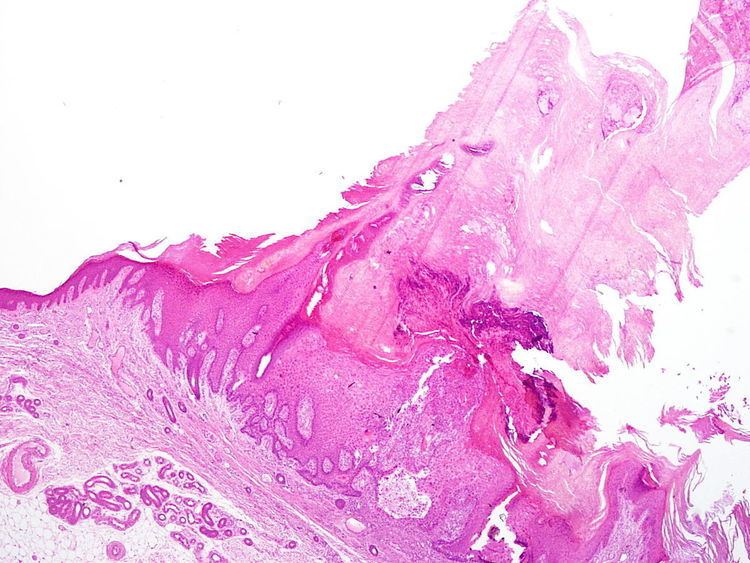DiseasesDB 31351 | eMedicine article/1056568 | |
 | ||
Cutaneous horns, also known by the Latin name cornu cutaneum, are unusual keratinous skin tumors with the appearance of horns, or sometimes of wood or coral. Formally, this is a clinical diagnosis for a "conical projection above the surface of the skin." They are usually small and localized, but can, in very rare cases be much larger. Although often benign, they can also be malignant or premalignant.
Contents
Etiology
The cause of cutaneous horns is still unknown, but it is believed that exposure to radiation can trigger the condition. This is evidenced by a higher rate of cases occurring on the face and hands, areas that are often exposed to sunlight. Other cases have reported cutaneous horns arising from burn scars. As with many other wart-like skin conditions, a link to the HPV virus family, especially the HPV-2 subtype has been suggested.
Prominent cases
Mortality/Morbidity
The lesion at the base of the keratin mound is benign in the majority of cases. Malignancy is present in up to 20% of cases, with squamous cell carcinoma being the most common type. The incidence of squamous cell carcinoma increases to 37% when the cutaneous horn is present on the penis. Tenderness at the base of the lesion is often a clue to the presence of a possible underlying squamous cell carcinoma.
Treatments
As the horn is composed of keratin, the same material found in fingernails, the horn can usually be removed with a sterile razor.
However, the underlying condition will still need to be treated. Treatments vary, but they can include surgery, radiation therapy, and chemotherapy.
